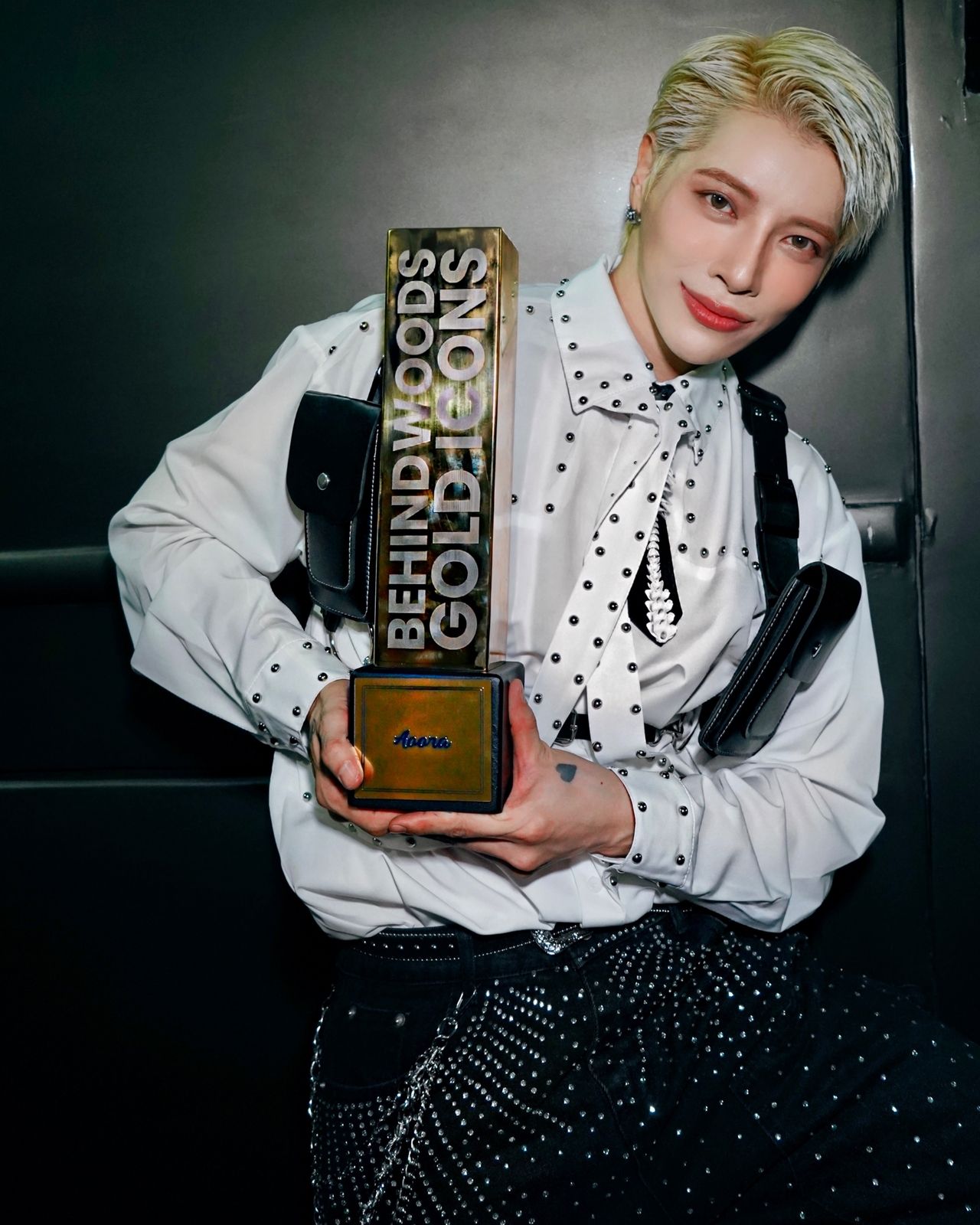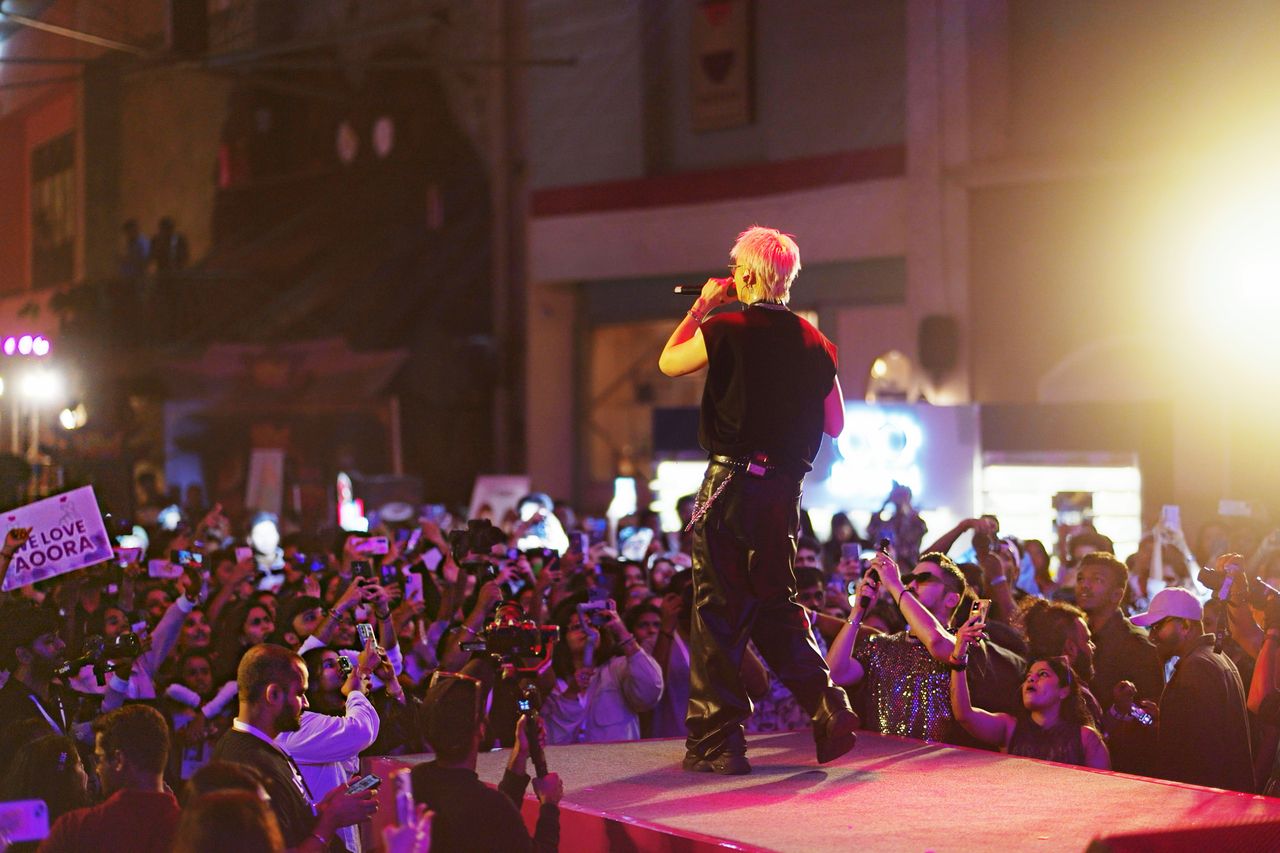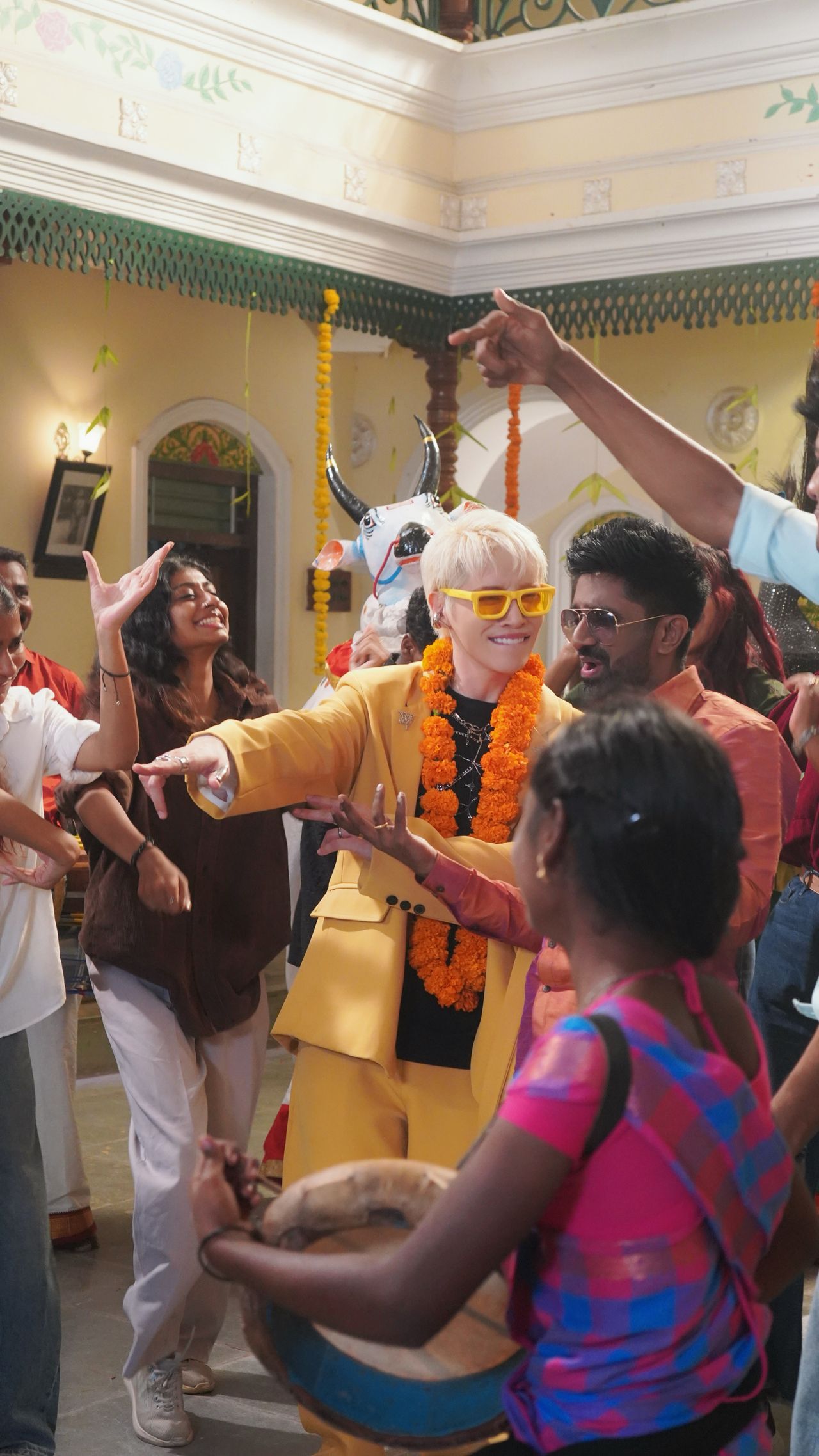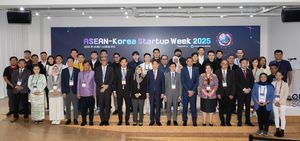 While most K-pop agencies hesitate to tap into India’s vast and complex music market, citing its linguistic and cultural diversity, one artist has proven that the key to connection is not strategy alone — it is sincerity.
While most K-pop agencies hesitate to tap into India’s vast and complex music market, citing its linguistic and cultural diversity, one artist has proven that the key to connection is not strategy alone — it is sincerity.
Former K-pop idol Park Min-jun, known by his stage name Aoora, has become one of the few Korean artists to successfully establish a foothold in India’s entertainment world.
Last month, Aoora was named “International Icon Global Singer of the Year” at the International Iconic Awards 2025 in Mumbai, India. The annual ceremony honors outstanding figures in Bollywood, television, streaming and music. His recognition reflected not just musical success, but his growing role as a bridge between Korean and Indian pop culture.
“It’s not just about performing. It’s about understanding and respecting the culture you’re entering,” Aoora said. “That effort sounds easy, but it’s one of the hardest parts.”
From K-pop beginnings to cultural reinvention
Aoora debuted in 2011 in the boy band Double A, which was active for four years. After the group disbanded, he pursued solo projects across the US and Southeast Asia, performing in Malaysia, Indonesia and Thailand. In 2018, he joined a project trio called G.T.I in Indonesia, remaking the local hit “Lagi Syantik,” which went viral online.
But behind the scenes, the work proved frustrating. Most of his activities were limited to nightclubs, and creative freedom was scarce. Determined to stay true to his musical principles, he eventually left the group despite his agency’s threats and returned to Korea with help from the Korean Embassy. The experience left him shaken and reluctant to work overseas again — until he discovered Bollywood.
Scrolling through a streaming platform one evening, Aoora stumbled upon the 2014 Hindi hit “Cham Cham” starring Tiger Shroff.
“It was so fresh and full of joy,” he recalled. “The energy, the dancing in the rain — it felt like something I wanted to be part of.”
Drawn in by Bollywood’s vibrant visual storytelling, he began covering Indian songs with fellow Korean artists, which unexpectedly caught the attention of an Indian entertainment company.
Finding his stage in India
Aoora arrived in India in February 2023, first landing in Delhi before moving to Mumbai. The start wasn’t smooth; the air pollution was severe, and few locals knew about K-pop. But he saw it as more of an adventure than a challenge. His first public performance took place at a shopping mall concert. Initially, only a handful of people stopped to watch, but when he performed a popular Indian song in his own style, the crowd swelled to nearly 5,000.
 Encouraged by the response, he held another concert in Jammu, a region near Kashmir. There, too, audiences gathered by the thousands, waving lights and singing along.
Encouraged by the response, he held another concert in Jammu, a region near Kashmir. There, too, audiences gathered by the thousands, waving lights and singing along.
“That warmth from the people made me realize I wanted to stay,” Aoora said. “I felt like I could live here healthily, happily — making music that brings people energy.”
The artist later went on to perform across multiple universities in Uttar Pradesh and collaborated with the Indian production company Vector Mob.
Aoora’s major turning point came in May 2023, when he reimagined “Jimmy Jimmy Jimmy Aaja” — a song from the 1982 Indian cult-classic film “Disco Dancer” — into a K-pop-style track. The remix, released in collaboration with Indian label Saregama, became a viral hit on social media, resonating with both younger audiences and nostalgic fans of the original.
The song’s success led to an invitation from “Bigg Boss,” one of India’s most popular reality shows, hosted by Bollywood megastar Salman Khan. Despite Aoora’s humble language skills — he spoke limited English and no Hindi — he stood out for his humor, sincerity and colorful personality.
Producers allowed him to communicate in English, while he made efforts to learn Hindi and connect through gestures and music. His brightly dyed hair and cheerful attitude turned him into a fan favorite, and he finished in the show’s top 10.
“When you don’t fully understand the language, you rely on authenticity,” he said. “I didn’t try to force anything. I just showed who I really was.”
Rather than simply translating Korean music into Hindi, Aoora has focused on fusing Indian folk traditions with K-pop elements. Over the past two years, he has released 11 songs featuring regional artists from across India.
Among them, “Thi Thi Thara (Kuttanadan dreams)” — a reinterpretation of a folk song from the Indian state of Kerala — features Indian singer Sireesha Bhagavatula and Korean producers Fridayyy and Mellow Kitchen. Another project, “Oi Nasoni,” merges K-pop melodies with folk rhythms from Assam, a northeastern state in India. His latest release, “Kimchi Dosa,” a collaboration with Dharan Kumar, an artist from the state of Tamil Nadu in southern India, playfully mixes the names of two national dishes — Korea’s kimchi and South India’s dosa — symbolizing the fusion of the two cultures.
“India is incredibly diverse — north, south, east and west all have distinct music and color,” Aoora said. “When I first discovered Bollywood, I thought it was one big industry. Later, I realized it’s many different worlds.”
 Why India is still a frontier for K-pop
Why India is still a frontier for K-pop
Despite his success, Aoora notes that K-pop remains a niche interest in India. While BTS and Korean TV dramas have a visible following in major cities such as Mumbai, Delhi, Chennai and Bengaluru, the country’s sheer cultural and religious variety makes it difficult for any foreign genre to dominate the mainstream.
“Many Indians still see K-pop as something far away,” he explained. “They enjoy Coldplay or Ed Sheeran, but they also have their own rich festivals and musical traditions that take priority.”
He notes that structural barriers, such as a ban on Chinese apps like TikTok, also limit K-pop’s exposure. Yet, he remains optimistic, believing that with a locally tailored approach — one that reflects India’s emotional storytelling and community spirit — Korean artists can eventually find broader appeal.
“If Korean companies really study the culture here, like Hybe did with Katseye, they can succeed,” Aoora said. “It just can’t be done the same way as in the US or Southeast Asia.”
Now entering his third year living in India, Aoora continues to work closely with local producers and TV networks. He is preparing a new program with Zee TV, in which he travels through regional towns, collaborates with folk musicians and blends their traditional sounds with K-pop rhythms.
Aoora’s long-term goal is not just to expand his career, but to give back to the community that embraced him.
“There are so many talented people here who just need opportunities,” he said. “I want my work to help them get noticed, just as India gave me a new beginning.”
- 2 NK soldiers briefly cross MDL to apparently chase defecting soldier: sources
- Hybe partners with LAFC
- N. Korea breaks ground on memorial museum for its troops killed in Russia’s war with Ukraine
- Seoul shares open sharply higher on eased US-China tensions
- Lee says ‘carefully’ reviewing impact on financial markets during US tariff talks









Most Commented